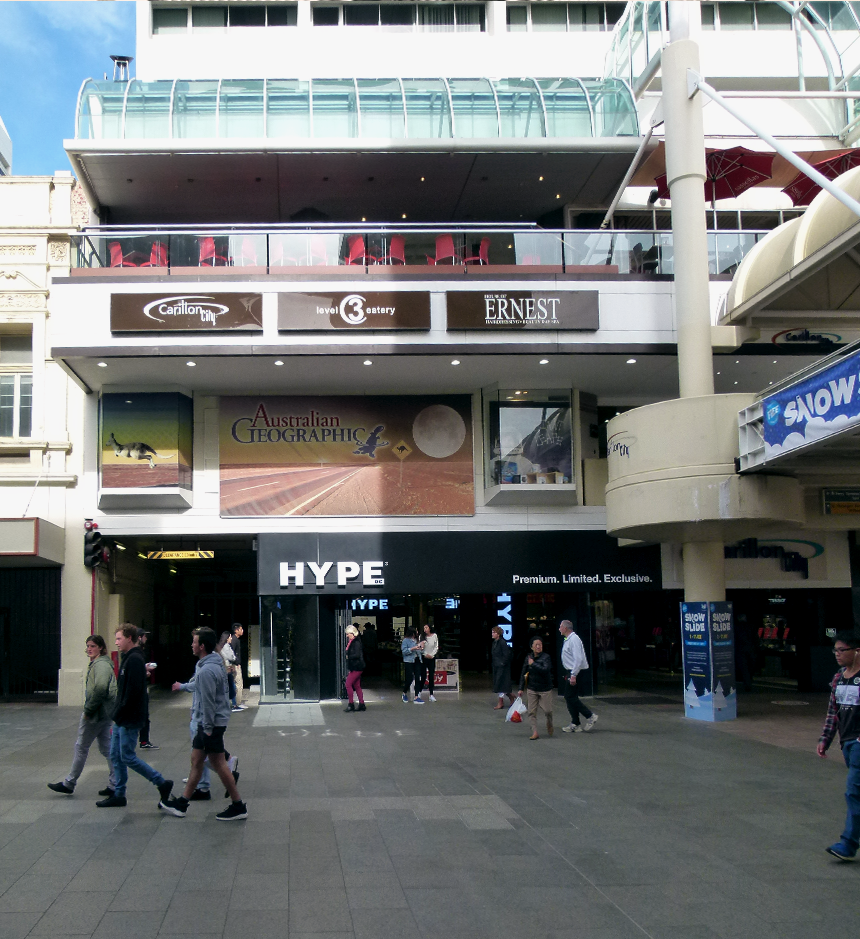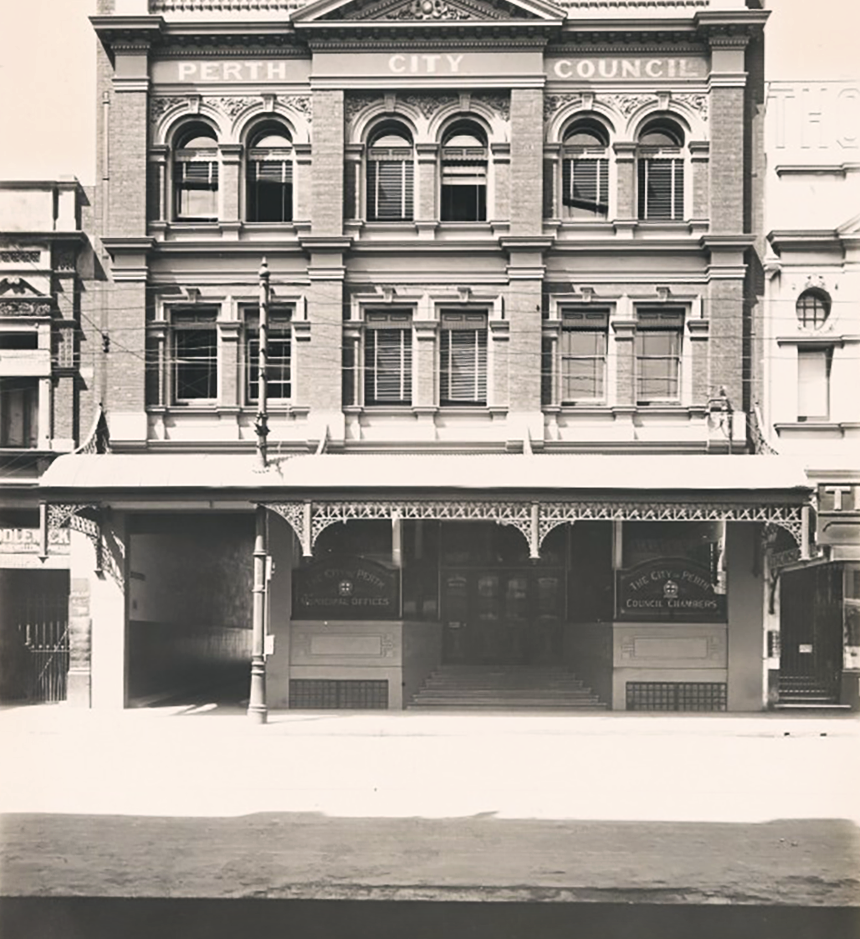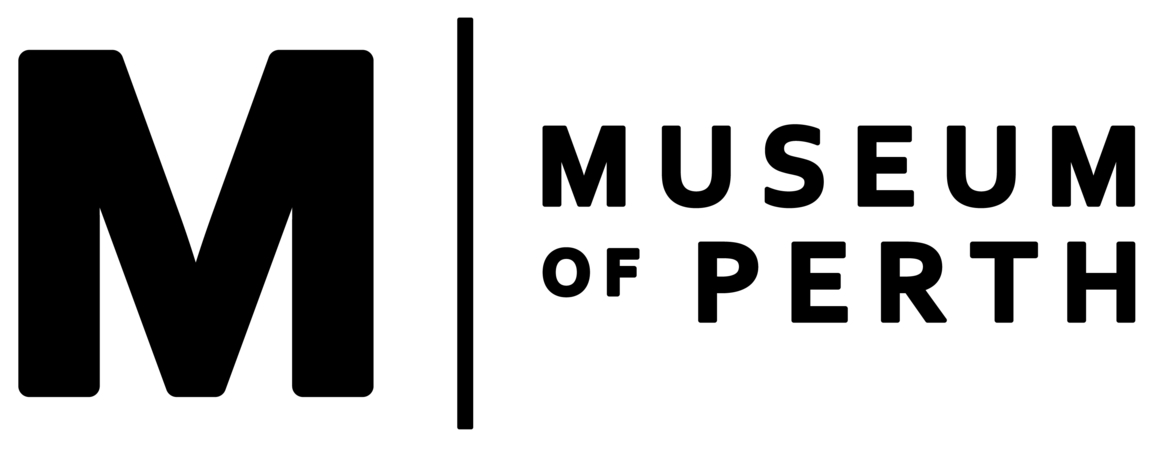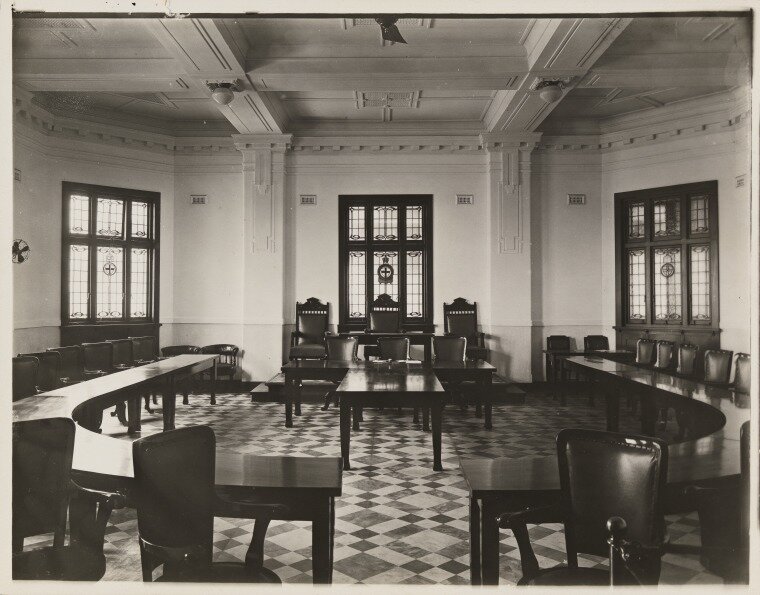STRELITZ BUILDINGS / PERTH CITY COUNCIL CHAMBERS (1908-1970)
German brothers Paul and Richard Strelitz came to Victoria in 1886 and 1892 respectively. Richard was soon transferred to WA, and when the lure of gold brought Paul across in 1894, they left their respective employment and established Strelitz Brothers, Merchants and Shipping Agents of Fremantle and Kalgoorlie. Within the next decade Paul was Consul of the Netherlands and Richard was Consul to Denmark and Sweden. Their business was also enormously successful and they soon expanded into Perth.
In late 1907 architect Joseph Allen called for tenders for the construction of “a large business premises” he had designed for the brothers on one of their Perth town sites. It was almost directly opposite the future Forrest Place and ran from 207 Murray Street to 672 Hay Street.
Comprised of two separate buildings, one fronting each street and warehouses and a yard in between, the combined floor area was nearly 12,000 square metres. Todd Brothers were successful in tendering for this extensive, ambitious project which came second only to the Supreme Court buildings off St George’s Terrace in the quantity of bricks used in construction in Perth to that time.
Just as the British General Electric Company leased offices in the Strelitz Bros Buildings in Boulder, so they did in Perth, moving into the Murray Street end when construction was complete in 1908. The Optical and Photo Supplies Co (taken over by Kodak in 1924) leased the Hay Street building.
In 1923 Perth’s GPO was completed and the next year, Forrest Place created. Entrepreneur William Padbury owned a significant block directly opposite, on which he would build in 1925. The Strelitz brothers sold the Murray Street building to him in August 1924. A shrewd businessman, he resold it within a week to the Perth City Council for £37,500 (around three million dollars today), making a tidy profit of £2,000.
The Perth City Council, which had been in the Perth Town Hall since 1871, were then so short on space they were housing staff in the Public Gallery. They engaged architects Hobbs Smith & Forbes to build offices and council chambers on the old warehouses and yard behind the Murray Street building. To generate revenue, they then converted the ground floor of the Town Hall into shops.
Council remained in the Murray Street building until they moved to the newly constructed Council House on St George’s Terrace in 1963.
Destruction
The Council Chambers were demolished in 1970 to make way for Carillon City, a new retail development with entrances at both Hay and Murray Streets.
By Shannon Lovelady
Story from Demolished Icons of Perth












